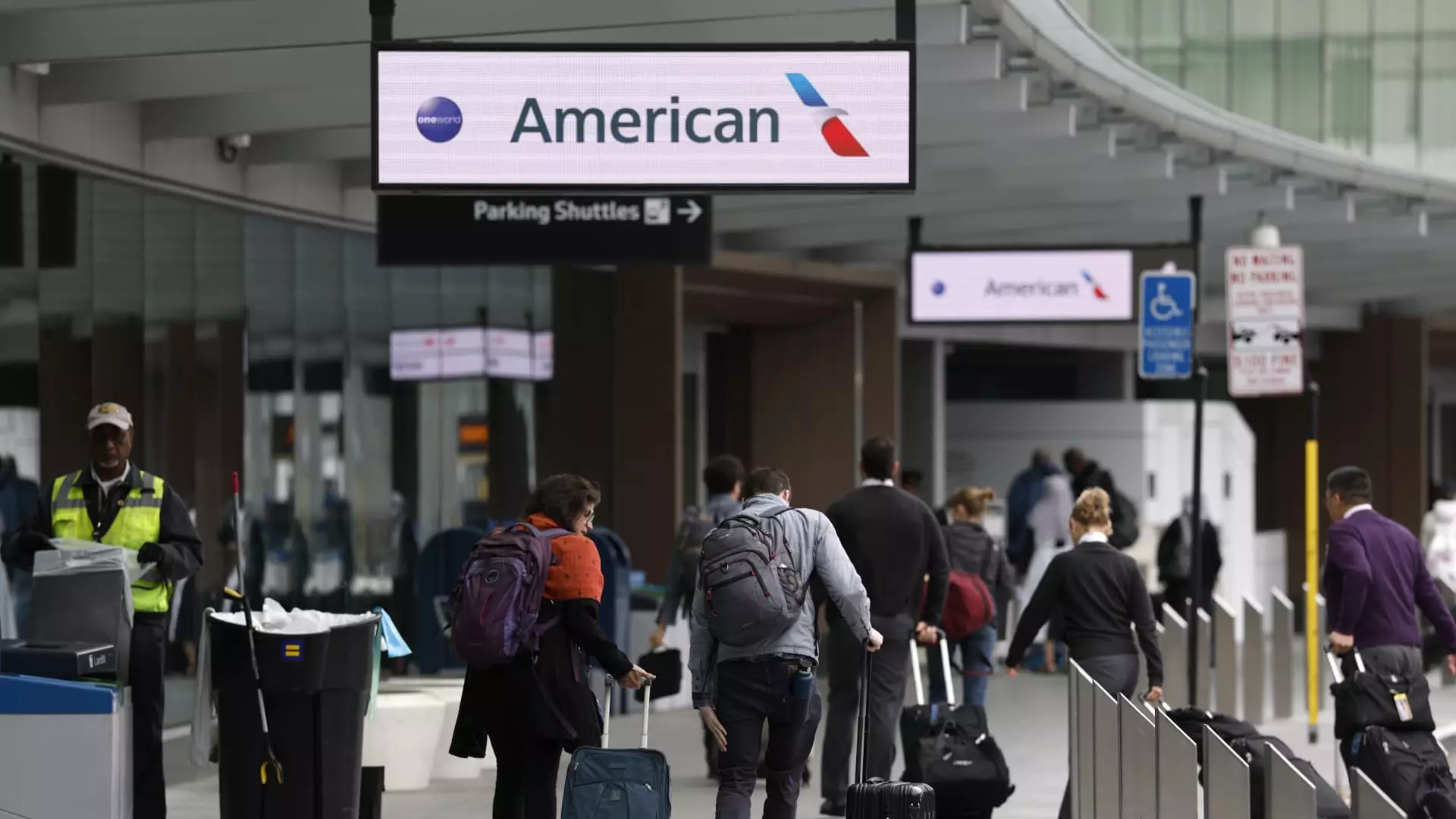The current landscape of the airline industry unveils a stark reality: a troubling undercurrent of uncertainty is coursing through what was once a thriving sector. Airline CEOs, during recent earnings calls, have voiced concerns that an unexpected downturn may be on the horizon. This comes on the heels of high forecasts set earlier in 2025, when optimism ran rampant. However, the disillusionment now prevalent reflects a deeper disconnection between economic predictions and the palpable consumer hesitation regarding travel. Notably, factors such as volatile markets, ongoing tariff spats, and the overarching fear of recession are contributing to this discord.
Airline executives are experiencing an unsettling déjà vu as they grapple with surplus capacity—a situation that recalls previous industry struggles. As consumers reevaluate their travel plans and expendable income, the joy of vacationing is overshadowed by economic anxiety. American Airlines CEO Robert Isom succinctly articulated this sentiment: “Nobody really relishes uncertainty when they’re talking about what they could do on a vacation and spend hard-earned dollars.” This raises an important question: How long can airlines continue to operate in a climate where uncertainty looms over collective decision-making regarding leisure travel?
The Impact of Corporate Travel Declines
It is imperative to recognize that the decline in corporate travel is a significant factor influencing airlines’ financial outlooks. Corporate travelers, who typically book flights that yield higher fares due to their last-minute nature, are now becoming increasingly scarce. Conor Cunningham, an analyst at Melius Research, predicts that corporate travel is among the first casualties in an economic downturn. Thus, when corporate decision-makers find themselves questioning expenditures, the need for business trips diminishes rapidly, presenting an alarming challenge for airlines whose business models rely heavily on this demographic.
Delta Air Lines, Southwest, and United Airlines are all preaching caution and have recalibrated their growth expectations. In a surprising pivot, these airlines are reducing their capacity growth in anticipation of tougher times ahead. This reflects a notable shift from the more aggressive strategies employed previously. With lower ticket prices becoming a standard strategy to fill otherwise vacant seats, the competitive landscape appears less enticing. Cheaper fares may attract leisure travelers, but the broader narrative suggests deeper problems await these carriers should economic uncertainty persist.
A Disruptive Summer Ahead
Airlines are clinging to the hope of a robust summer travel season, yet even that sentiment is fraught with apprehension. The projected surge in travel may not sufficiently offset the declining fare landscape. Reflecting on this juncture, Shane Tackett, CFO of Alaska Airlines, candidly admitted that demand is still significant, but it falls short of the robust figures anticipated earlier. As airlines slashed fares in an effort to stimulate demand, it engenders a vicious cycle of diminishing returns—where cutting prices may not necessarily translate to increased passenger numbers.
Furthermore, executives report that while international routes remain relatively stable, pressure lingers over domestic travel—an unnerving reality that could calcify if economic concerns escalate. The shrinking margins could lead to a snowball effect, forcing carriers to make deeper cuts than initially planned. The implications of such decisions carry weighty ramifications not just for business travelers but for the health of the industry as a whole.
The Uncertain Path Forward
In the words of American Airlines’ Isom, regaining certainty in the market is essential for restoring economic stability. However, the question resonates: when will that certainty return? Airlines can only hope to navigate through this haze by adjusting expectations and embracing flexibility—which, ironically, may become the saving grace of our increasingly unpredictable economy.
A phase of reflection is necessary, as the industry’s trajectory depends heavily on public perception and sentiments surrounding economic health. If consumers are hesitant to spend on travel due to fears that extend beyond their purchasing power, airlines may need to rethink their operational standards and customer engagement strategies. In an era where even the briefest of economic fluctuations can drastically affect flying behaviors, the road ahead for airlines is anything but clear.

